#chevy specs
Explore tagged Tumblr posts
Text
It’s thrilling having the opportunity to work these desert races. Getting chances throughout my work day to grab my personal camera and run out to the track to shoot these beast trucks that are easily hitting 140mph+ in some sections.
Yesterday when I heard the unlimited trucks were lining up to start I grabbed my gear. I walked about seven minutes into the middle of the infield and found my spot where I would soon catch this shot. The first few Unlimited trucks came and went leaving massive clouds of dust. Then Thomas St. Peter comes flying through. This guy’s tearing through the berms, ripping wide on the last turn. They’re approaching me, fast. Everyone who passed me earlier had feathered their gas at this hole. NOT ST. PETER! They just said, “fuck it” and launched out of it sending them flying into the air all crooked. It was equally wild and scary being so close to one of these trucks as it came off the ground.
Yeah, I love what I do.
Nikon D610
ISO 125
180mm
1/400
f/10
Post #1) 02/08/2025

#St Peter Racing#Farnan’s Fotoz#MadMedia#off road racing#off road#off roading#King Shocks#Unlimited Spec#Nikon#Nikon D610#Nikon Photographer#Desert Racing#Parker AZ#Parker Arizona#Arizona#Parker 400#BF Goodrich#BF Goodrich Tires#Unlimited Class#Airborne#Flying#Fast#Motorsports#2024#211#Tom St. Peter#Trucks#Ford#Chevy#Racing
1 note
·
View note
Text
2025 Chevy Bel Air Price | 2025 Chevy Specification & Features
Curious about the 2025 Chevy Bel Air Price? Check out its price, specifications, and standout features. Click here to explore all the details and get ready for the future of driving!
The Chevrolet Bel Air is a name steeped in automotive history, and the 2025 Chevy Bel Air seeks to carry that legacy forward with a blend of modern technology and classic charm. Whether you’re a car enthusiast looking to relive the golden age of American cars or simply someone looking for a stylish and reliable vehicle, the 2025 Chevy Bel Air might just be the perfect choice. So, what can you expect from this upcoming release? Let’s dive in to explore the price, features, and why the Bel Air continues to capture hearts.
What’s New for 2025 Chevy?
2025 Chevy Bel Air Price
Pros and Cons of Chevy Bel Air
Pricing and Which Model to Buy
Recommended Model
Engine, Transmission, and Performance of 2025 Bel Air
Fuel Economy and Real-World MPG of Chevy Bel Air
Interior, Comfort, and Cargo of Chevy Air
Infotainment and Connectivity
Safety and Driver-Assistance Features
Key Specifications
Available Colors of Chevy Bel Air
Why Buy the 2025 Chevy Bel Air?
Conclusion
What’s New for 2025 Chevy?
The 2025 Chevy Bel Air arrives with several updates that enhance both performance and aesthetics. For starters, Chevrolet has given the Bel Air a sleeker, more aerodynamic design that retains its retro charm. Expect updated LED headlights, a more aggressive grille, and some new chrome accents that add to its vintage appeal. The interior has also been revamped with modern materials and the latest tech features, ensuring that drivers enjoy both comfort and connectivity.
Performance-wise, Chevrolet has tuned the engine for better fuel efficiency and overall road handling. There are also new driver-assistance features that come standard, offering a safer, smarter driving experience.
2025 Chevy Bel Air Price
When it comes to pricing, the 2025 Chevy Bel Air is expected to be competitive within the retro-inspired luxury car market. While official prices haven’t been fully announced, estimates place the base model around $38,000. Higher trims, especially those with advanced features like the all-wheel-drive option and enhanced safety tech, may go up to $50,000. Each model comes with a different set of features, so it’s important to consider which options align best with your preferences and budget.
Published by bestgaddi.com
#2025 Chevy Bel Air#2025 Chevy Bel Air details#2025 Chevy Bel Air features#2025 Chevy Bel Air model#2025 Chevy Bel Air price#2025 Chevy Bel Air review#2025 Chevy Bel Air specifications#2025 Chevy price#2025 Chevy specs#Chevy Bel Air 2025
0 notes
Text
New Chevy Traverse 2024 Return to USA: Price, Specs, & Pics
New Chevy Traverse 2024 Return to USA: Price, Specs, & Pics. The Chevy Traverse 2024 is a three-row SUV with a roomy and stunning interior. As reported by Cars.com, it is a top-ranked three-row SUV that ranks 3rd behind its rivals. The Kia Telluride, Ford Bronco, Hyundai Palisade, Jeep Grand Cherokee, and numerous other SUVs are its major rivals. The right away offered 2023 Chevrolet Traverse has…

View On WordPress
0 notes
Text
NASCAR is Kinda Maybe Vaguely Doing Something and People Are Mad About It
In a race weekend of rain, delays, and Stewart Haas cars hitting the barriers every five minutes, the biggest story coming out of the NASCAR Chicago Street Race seems to be this crossover EV prototype...and people are mad at it.
Well, people are also mad that Bubba Wallace steered race winner Alex Bowman into the wall after the race, but one: a NASCAR driver getting mad and bumping into someone else after the race is a non-story, two: the same people that are mad at Bubba are probably the same people that are mad about the EV prototype.
So, at the Chicago Street Race, NASCAR finally unveiled the EV prototype that everyone already knew about - they were going to unveil it at the LA Coliseum preseason race but then they didn't because that race also saw rain and they ended up truncating the weekend - so how did they do this?
Did they announce it was going to replace one of the three national touring series? Maybe trucks since, you know, trucks and crossovers are both big.
Or maybe the Xfinity cars, since those are still a generation behind and Ford and Chevy just run the same models there as in Cup, so maybe a crossover for that series would make sense.
Or maybe start out with a new, more standalone series on street courses or something, sorta like a stock car version of Formula E.
Well, no, they did none of that.
Quite literally all they did was having the car speed off from a standing start and talk about some of the specs.
It's a 1300 hp car designed in collaboration with Ford, Chevy, and Toyota, David Ragan has been the test driver, and it was to promote a new collaboration agreement between NASCAR and ABB - who is also the title sponsor of ABB. That's all it was.
And yet, NASCAR fans are acting like these things are gonna replace Cup for next year. It's a dramatic overreaction.
I'm not even particularly a fan of EVs. I enjoy the noise and power coming from a car and I think that EVs - particularly Teslas and wannabe Teslas like the Ford Mustang Mach E - are deliberately garish, bulbously proportioned, and expensive props that the driver uses to convey how much more environmentally conscious and morally superior they are to the average driver.
So yeah, to a degree I understand why the "core" NASCAR fan or whatever may not agree with that message.
But...they're not even doing anything with it. It's a promotional piece for NASCAR to take to corporate events and all that.
The closest NASCAR is to an EV series is that there was also talk about them partnering with Dana White to invest in Nitrocross, an EV rallycross series that Conor Daly raced in once.
Even if NASCAR did launch an EV national series, you could just, you know, not watch it. I don't pay attention to Formula E or MotoE despite having long been an F1 fan and currently being a MotoGP fan.
It's just weird to see this very weak, very minor gesture from NASCAR and there being this vicious backlash towards it. I'm the kind of person that gets vaguely disappointed every time I find out a new performance car has some sort of hybrid element to it, so do you have any idea how off-base you need to be for me to disagree with your anger on this?
It's just such a nothing storyline, calm down.
Elsewhere in the Chicago Street Race weekend, the Xfinity race was pretty great actually, another SVG win and some cool battles between him, Gibbs, and Larson throughout, so that was nice. The Cup race was pretty good when it was running but that long rain delay did kinda suck a lot of the energy out of it. Plus, SVG getting speared by an out-of-control Briscoe was pretty lame.
Especially since Chase Briscoe and Josh Berry in their SHR cars would basically spend the whole second half of the race hitting the barriers and/or going off every five or so laps.
Oh, and postrace, Bubba Wallace banged doors with Alex Bowman while Chase Elliott banged doors with Daniel Suarez because, once again, this is NASCAR and that's just the kind of stuff that happens in NASCAR. People are only mad when Bubba does it though. Odd. I wonder if there's a certain thing about Bubba that leads to him being on the receiving take of all this bad faith criticism...
Other than that, Indycar had its hybrid era start at Mid-Ohio in a race that started off boring but ended in Pato O'Ward holding off Alex Palou to take the win for Arrow McLaren.
Something much appreciated since, earlier in the day, McLaren was running 1-2 in the British Grand Prix until they kept Oscar out on slicks on a wet track to lose second, and then switched Norris onto the wrong tyres once things dried up.
And then there was MotoGP. Pecco Bagnaia was chasing down Jorge Martin in the closing stages, Martin first in the championship, Pecco second after dominating the last two race weekends to chip away at Martin's lead. Martin is feeling the pressure, feels he needs to win to stop the bleeding, but just pushes too hard into turn one, the bike slides out from under him, and Pecco goes through to win.
Marc Marquez, the man who beat Jorge Martin to be Bagnaia's 2025 Ducati teammate, came through in second, his brother Alex Marquez in third, and Enea Bastianini - Bagnaia's current teammate - came through in fourth. After the Spanish GP sprint, Jorge Martin was forty-two points ahead of Bagnaia, as recently as after the Catalan GP, that gap was thirty-nine points, now? Bagnaia leads by ten.
Pecco won the Catalan GP main race, swept both races at Mugello, both races at Assen, finished third behind Martin and Miguel Oliveira at the German GP sprint, but then won the German GP main race as Martin crashed out to take the championship lead. Truly a tremendous four race run from Bagnaia.
Keep in mind, nobody won back-to-back main races at all in 2023! Pecco just won four in a row.
This is why I love MotoGP so much, it still has that drama, that magic, that I find so many series lack these days.
Unfortunately, it's schedule is also crap, so MotoGP is off until August 4th. Fuck.
NASCAR at Pocono and Indycar's double race weekend at Iowa will hopefully provide some entertainment next weekend. Now I just need to hope I don't die of MotoGP withdrawal in the meantime...wish me luck.
21 notes
·
View notes
Text


This so almost canonically happened. Posting about my CaW AU ocs again because these idiots live rent free in my head now.
[Start ID: recreation of a meme where two women are holding hands in front of a gold Volvo and their license plates, that say “FART” and “SHART” in the form of a Reddit post on r/NorthCarolina by u/Ziska220, and the caption reads “FART girl meets SHART girl!” With wind and heart emojis. The OCs featured are Sid, a blond spec-evo eosinophil with purple stripes and glasses, and Joe, a killer T with brown stripes and long hair. They’re in front of a black Chevy and the yellow sky can be seen in the background. The caption is edited in this version and scribbles out the first “girl” and inserts “person,” as Sid is nonbinary. End ID.]
#cells at work#hataraku saibou#my art#spec evo#speculative evolution#speculative biology#au#my OCs#oc meme#described
11 notes
·
View notes
Text

New Zealand Railways Road Services №1493 [Chevrolet MS/NZMB] seen at Glenbrook Vintage Railway during the 2024 vintage harvest fest.
New to NZRRS in 1947, these 17 seater Chevy's did not last long in NZRRS service. They were replaced by Leylands and Macks. This particular coach spec Chevy was preserved by the Chevrolet Enthusiasts Club.
Other than a service car whose whereabouts and status are unknown, this is the oldest NZRRS bus in preservation. The National Railway Museum of NZ also has a much younger Bedford SB3/NZMB №3583 in preservation.
If you want to support my work click here, to buy this photo.
5 notes
·
View notes
Text
The 2025 Chevrolet Corvette ZR1 is expected to be the most powerful and dominant Corvette ever, boasting an 850 horsepower V8 engine with over 800 lb-ft of torque.
~ Amal Shaw, HotCars.com
•
A V8 Journey, from Roadsters to SuperCars.
~ Michael McCrea, Corvette SuperCars
•
#C8 #Corvette #ZR1 #TwinTurbo #V8 #AWD #Hybrid #CorvetteSuperCars #Worldwide #Tour #LeftHand #RightHand #WorldCar #HellYa #RoadstersToSuperCars
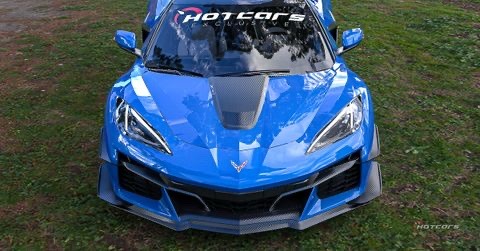



#corvette#corvettesupercars#stingray#c8#widebody#c1#c2#c3#C4#c5#C6#c7#ZR1#TwinTurbo#AWD#SuperCars#WorldCar
4 notes
·
View notes
Text
49 Chevy
49 Chevy
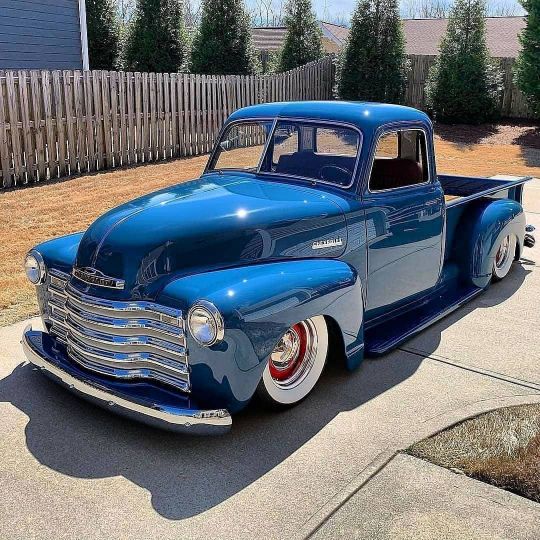
Top 10 Lifted Chevy Trucks Modified for Off-roading and Desert Racing
Badass Chevy prerunners, lifted trucks and rock crawlers built in America. Spec lists, detailed reviews, built threads, and picture galleries of C/K, Silverado, Tahoe, Suburban, S10, Blazer K5 and Colorado pickups
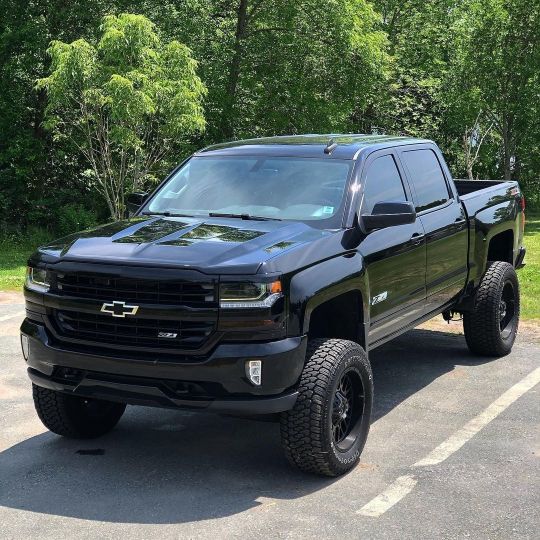
1958 CHEVROLET IMPALA CONVERTIBLE
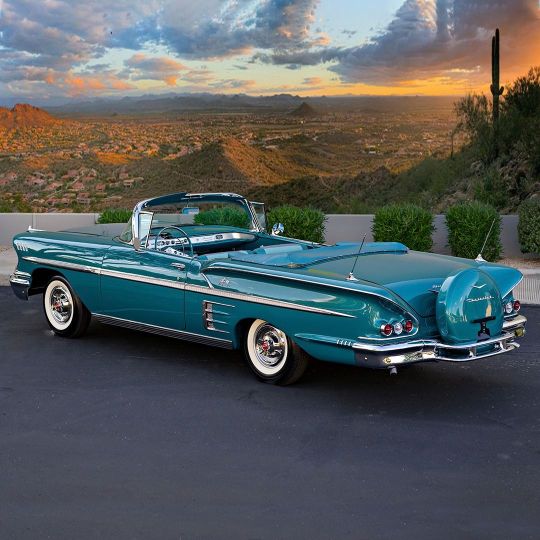
Emma & Luke’s Amazing Modern 1979 Chevy Van Remodel (Interview!)
Emma and Luke said goodbye to their city lifestyle in Toronto, bought a 1979 Chevy Van and made it into an amazing home on wheels they've used to explore Nova Scotia, the East Coast of

47-87 C-10 Chevy Truck / Bench Seat Covers / Buddy Bucket Seat Frames

2021 Chevy Tahoe ZR1 Lifted on 26" Wheels, 37" Tires
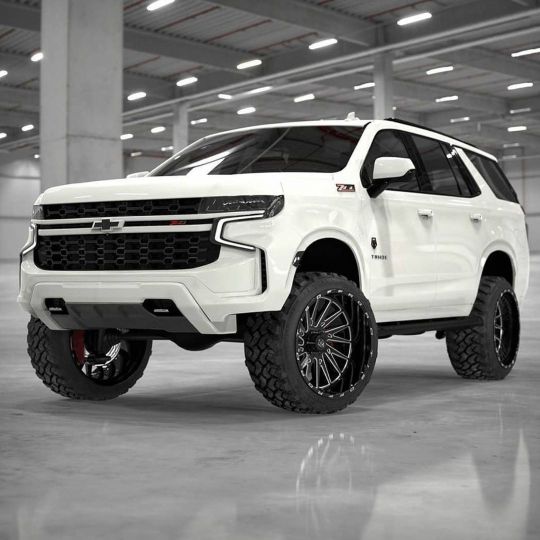
1951 Chevy Truck - Hama Quilt Humility
Check out John Mathieu's 1951 Chevy Truck with BFGoodrich Tires and a Edelbrock Manifold, Featured in the 2007 August Issue of Classic Trucks Magazine
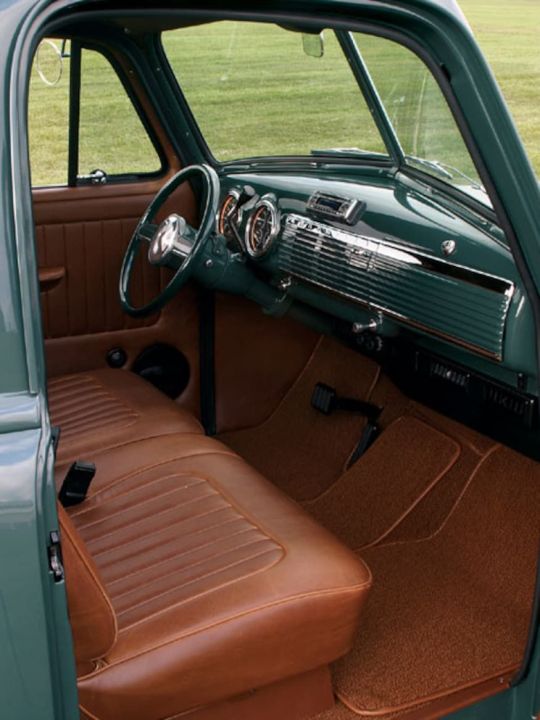
1957 Chevrolet Bel Air Sport Coupe
Restored 1957 Chevrolet Bel Air Sport Coupe for sale | 283ci 200 hp V8 with Power Pack induction (FC suffix code) | Upgraded Turbo Hydramatic 3-speed transmission
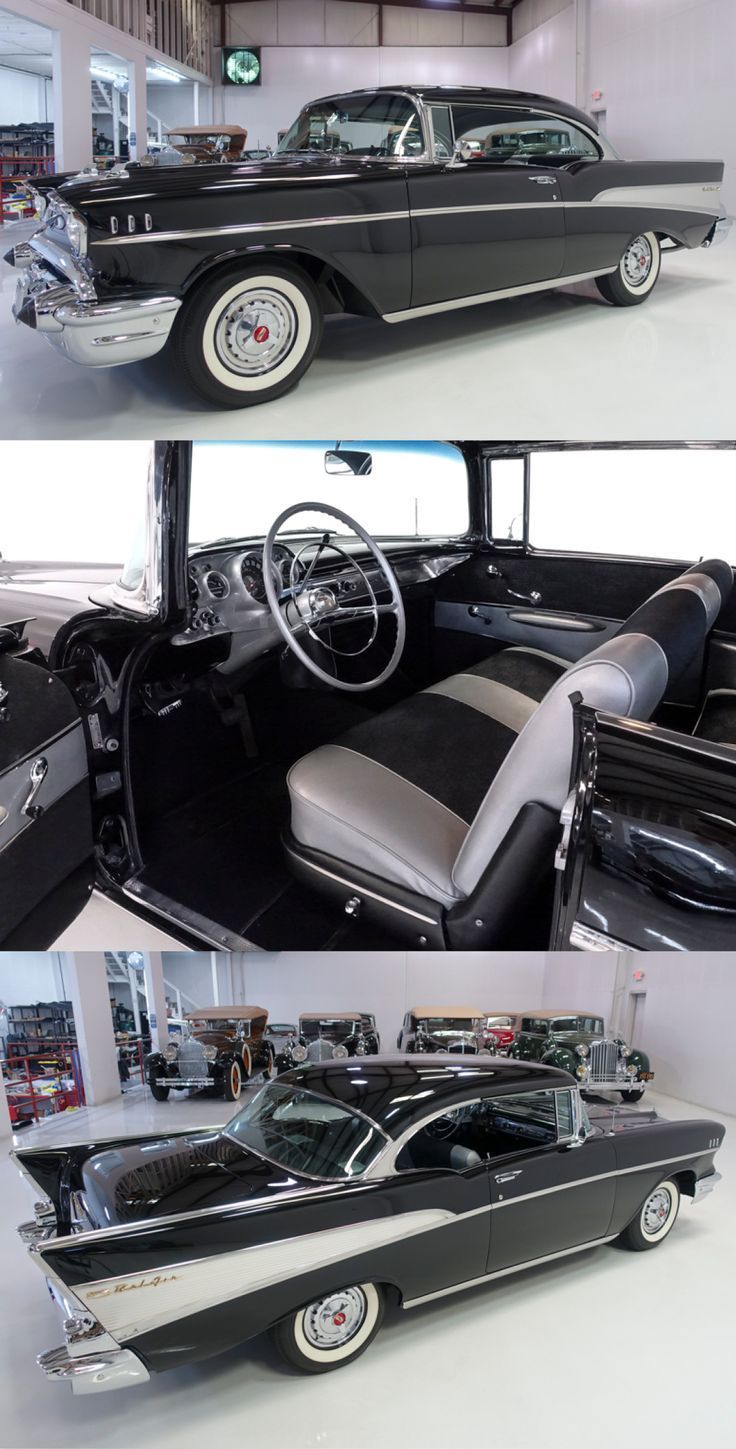
Stanced Matte Green Chevy Cruze on Deep Dish Klutch Wheels
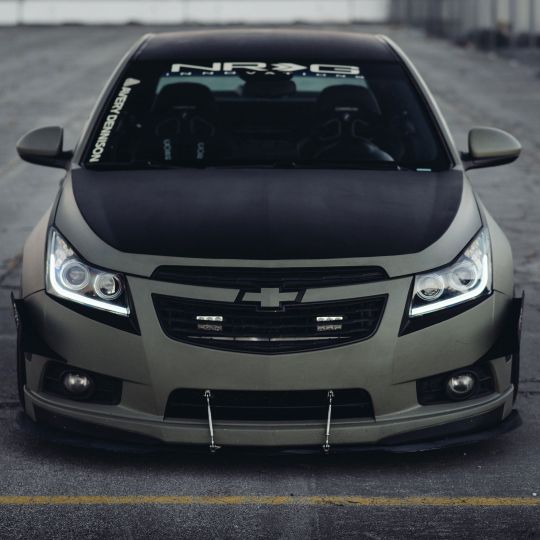
1969 Chevy Camaro
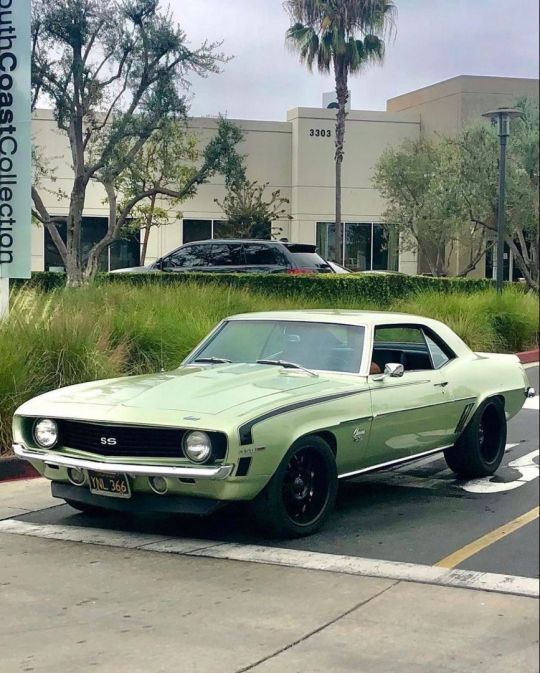
Chevy Tahoe RST Wash Ninja Ceramic Coatings

4 notes
·
View notes
Photo

February 02, 2025 Flora-and-fauna wallpaper with painted trim to match. Fabulous geometric floor tile. A rich use of color and pattern. I’m a maximalist at heart and have a weakness for these bold design moves. You’ll see lots of them in today’s post — part 2 of my coverage of the 10th annual Tribeza Interiors Tour, a tour of Austin homes that shows off the work of interior designers. (Here’s part 1 if you want to start there.) Let’s go! Lindsey Hanna Design I could barely tear myself away from the mystical mudroom in the Lindsey Hanna Design home. First off, I adore the Scissortail wallpaper (in sepia) by Counterpart Studios, designed in collaboration with Austin’s chainstitching queens at Fort Lonesome. (For more Fort Lonesome wallpaper, check out this home from the 2023 Tribeza tour.) Sage green paint on the trim picks up the color in the moon spots and flowers’ eyes. It coordinates with the Soci Aura floor tile, whose starry design adds to the romantic nightscape of the Scissortail paper. Thanks, Lindsey Hanna team, for providing spec sheets in your rooms — so helpful! Maybe add paint colors too next time? I’m greedy. In the powder bath, terracotta wall tile warms up the space. The color and geometry of it, with a geometric mirror to match — so good! A Lostine punched-leather pendant adds a tactile, hand-crafted accent. Here’s the spec sheet. In the primary bath, a matte brown concrete tub melted my indifference to showpiece bathtubs. I always suspect those fancy stand-alone bathtubs are rarely filled. And yet they take up so much space for a symbolic (aspirational?) gesture at leisure time or self-care. I dislike a tub even more when it’s shoehorned into a dim shower stall. Who wants to soak in one of those? Here, however, the tub is a tactile work of art. I could get behind a tub this beautiful. Dandelion ceramic floor tile in brown and terracotta set everything off to perfection. Aha, the wall color is provided in this spec sheet — nice! In the girls’ bathroom, Louise Jones’s Stellar Blush wallpaper, available from Supply Showroom, livens the walls. Australian plant lovers, this one is for you. Louise Jones describes the botanically inspired design: “[T]he distinct star-like flower of the blue devil (Eryngium pinnatifidum) shines amongst a beautiful mass of gum leaves, kangarooo paw and acacia blossoms.” G’day, mate! But it was the floor tile that stole my heart: a terracotta star-and-cross by Zia Tile. Love, love, love. The spec sheet Yet another bathroom features teal oval shower tiles with terracotta grout, a terracotta-tile shower floor, and Tropicana Rucksack Green floor tiles from Clay Imports. A fun use of color and pattern! I spotted this snake vase on the dining table on the way out and suspect it’s the work of Austin’s monster-making ceramist Rick Van Dyke. In the entry, fluted paneling and checkerboard floor tile from Clay Imports set off a burl veneer console and mosaic mirror. West Chelsea Contemporary homeowner A sapphire blue Chevy Chevelle and vibrant mural-style wall art greeted visitors at the West Chelsea Contemporary owner’s home in Bryker Woods. The back garden grabbed my attention first, and I explored. Blocks of cut stone lead to a patio under a steel-pipe pergola, enclosed by a living wall for privacy. A Chinese warrior statue wearing a string of beads stands guard. You can see it’s going to be eclectic. A sunburst-patterned table provides outdoor dining space. A few steps down, a sunken patio with fire pit provides another seating area. Look at the vibrant color on the oakleaf hydrangea in the foreground. Inside, it was art, art, art, as befits the owner of a huge contemporary art gallery. The mountain scene is Cleon Peterson’s The Reflection. Another wall features Aboudia’s Les Enfants D’Abidjan Rouge-Orange. A Kiss stool by Barbara Kruger stands nearby. Roby Dwi Antono’s surreal Mystique Moonlight Lamp Dire warnings in framed wooden postcards from Jenny Holzer’s Survival series Lizzie Pincoffs Interiors Less provocative art greeted me at the Lizzie Pincoffs Interiors home in Tarrytown. A Lise Temple landscape above a black console perfectly echoes the colors of the entry wallpaper, Nympheus – Multi by G P & J Baker, featuring egrets and lotus leaves. Red-cushioned chairs and a blue-and-red rug pick up the wallpaper colors too. Off the entry, you step into a library with cobalt chairs, dark ceiling and walls, and a Dall sheep taxidermy. Texans love taxidermy in their decor. I saw more on a Lockhart homes tour last Christmas. It’s a gracious room, comfortable and traditional without being stuffy. I could see reading in here for hours. Or having cocktails with friends. In the powder bath, Peace and Music wallpaper by Mind the Gap sets a vibrant scene. A bouquet of orange protea flowers makes a perfect accent. A show-stopping display of flowers was in the dining room. Under a crystal-dripping chandelier, dozens of tulips, orchids, and calla lilies filled blue-and-white vases running the length of the table. It was a vision of spring — or the hothouse — in January. A sweet French-pleated cafe curtain with blue flowers was one of my favorite moments. A fanciful fruit bowl echoes the texture and gloss of the kitchen’s lattice backsplash tile. In a hall bath, I loved this wallpaper with geranium leaves and trim painted deep green to match. Blue Dog art adds a playful dash of blue. The wallpaper is Geranium by Cole & Son. A green door even! Great combo. Pretty bowls and trays accent the counter. Stay tuned for Part 3 of the Tribeza tour, featuring the final 5 houses. To read Part 1, click here. I welcome your comments. Please scroll to the end of this post to leave one. If you’re reading in an email, click here to visit Digging and find the comment box at the end of each post. And hey, did someone forward this email to you, and you want to subscribe? Click here to get Digging delivered directly to your inbox! __________________________ Digging Deeper Attend the annual Budding Out Plant Sale & Festival on March 15th at the John Fairey Garden in Hempstead. Shop for rare plants from the garden’s nursery and select plant vendors. Local artists and artisans as well as food, drink, and demonstrations will also be featured. Admission: $5 for members, $10 for non-members, children under 12 free. Hours: 10 am to 4 pm; members get early admission at 9 am (memberships available on day of event). Come learn about gardening and design at Garden Spark! I organize in-person talks by inspiring designers, landscape architects, authors, and gardeners a few times a year in Austin. These are limited-attendance events that sell out quickly, so join the Garden Spark email list to be notified in advance; simply click this link and ask to be added. Read all about the Season 8 lineup here! All material © 2025 by Pam Penick for Digging. Unauthorized reproduction prohibited. Source link
#PLANTS_AND_SEEDS#AUSTIN#DIGGING#HOMES#INTERIOR_DESIGN#INTERIORS#PART#TOUR#TRIBEZA#TRIBEZA_INTERIORS_TOUR#WALLPAPER
0 notes
Text
Pros and Cons of Chevy Bel Air
Pros
Classic Design Meets Modern Tech: The 2025 Bel Air maintains its iconic look while integrating modern-day features, such as a large touchscreen infotainment system and advanced driver-assistance technology.
Smooth Ride: Thanks to its newly updated suspension, this car offers a smooth and comfortable ride, making it great for long journeys.
Fuel Efficiency: The improvements in fuel economy for 2025 make this model a more cost-effective choice for everyday driving.
Cons
Limited Cargo Space: While stylish, the retro design does compromise cargo space, which might be a concern for families or those needing more storage.
Pricey Higher Trims: The higher trims of the 2025 Chevy Bel Air can get expensive, especially when adding premium features and advanced safety tech.
#2025 Chevy Bel Air#2025 Chevy Bel Air details#2025 Chevy Bel Air features#2025 Chevy Bel Air model#2025 Chevy Bel Air price#2025 Chevy Bel Air review#2025 Chevy Bel Air specifications#2025 Chevy price#2025 Chevy specs#Chevy Bel Air 2025
0 notes
Photo

February 02, 2025 Flora-and-fauna wallpaper with painted trim to match. Fabulous geometric floor tile. A rich use of color and pattern. I’m a maximalist at heart and have a weakness for these bold design moves. You’ll see lots of them in today’s post — part 2 of my coverage of the 10th annual Tribeza Interiors Tour, a tour of Austin homes that shows off the work of interior designers. (Here’s part 1 if you want to start there.) Let’s go! Lindsey Hanna Design I could barely tear myself away from the mystical mudroom in the Lindsey Hanna Design home. First off, I adore the Scissortail wallpaper (in sepia) by Counterpart Studios, designed in collaboration with Austin’s chainstitching queens at Fort Lonesome. (For more Fort Lonesome wallpaper, check out this home from the 2023 Tribeza tour.) Sage green paint on the trim picks up the color in the moon spots and flowers’ eyes. It coordinates with the Soci Aura floor tile, whose starry design adds to the romantic nightscape of the Scissortail paper. Thanks, Lindsey Hanna team, for providing spec sheets in your rooms — so helpful! Maybe add paint colors too next time? I’m greedy. In the powder bath, terracotta wall tile warms up the space. The color and geometry of it, with a geometric mirror to match — so good! A Lostine punched-leather pendant adds a tactile, hand-crafted accent. Here’s the spec sheet. In the primary bath, a matte brown concrete tub melted my indifference to showpiece bathtubs. I always suspect those fancy stand-alone bathtubs are rarely filled. And yet they take up so much space for a symbolic (aspirational?) gesture at leisure time or self-care. I dislike a tub even more when it’s shoehorned into a dim shower stall. Who wants to soak in one of those? Here, however, the tub is a tactile work of art. I could get behind a tub this beautiful. Dandelion ceramic floor tile in brown and terracotta set everything off to perfection. Aha, the wall color is provided in this spec sheet — nice! In the girls’ bathroom, Louise Jones’s Stellar Blush wallpaper, available from Supply Showroom, livens the walls. Australian plant lovers, this one is for you. Louise Jones describes the botanically inspired design: “[T]he distinct star-like flower of the blue devil (Eryngium pinnatifidum) shines amongst a beautiful mass of gum leaves, kangarooo paw and acacia blossoms.” G’day, mate! But it was the floor tile that stole my heart: a terracotta star-and-cross by Zia Tile. Love, love, love. The spec sheet Yet another bathroom features teal oval shower tiles with terracotta grout, a terracotta-tile shower floor, and Tropicana Rucksack Green floor tiles from Clay Imports. A fun use of color and pattern! I spotted this snake vase on the dining table on the way out and suspect it’s the work of Austin’s monster-making ceramist Rick Van Dyke. In the entry, fluted paneling and checkerboard floor tile from Clay Imports set off a burl veneer console and mosaic mirror. West Chelsea Contemporary homeowner A sapphire blue Chevy Chevelle and vibrant mural-style wall art greeted visitors at the West Chelsea Contemporary owner’s home in Bryker Woods. The back garden grabbed my attention first, and I explored. Blocks of cut stone lead to a patio under a steel-pipe pergola, enclosed by a living wall for privacy. A Chinese warrior statue wearing a string of beads stands guard. You can see it’s going to be eclectic. A sunburst-patterned table provides outdoor dining space. A few steps down, a sunken patio with fire pit provides another seating area. Look at the vibrant color on the oakleaf hydrangea in the foreground. Inside, it was art, art, art, as befits the owner of a huge contemporary art gallery. The mountain scene is Cleon Peterson’s The Reflection. Another wall features Aboudia’s Les Enfants D’Abidjan Rouge-Orange. A Kiss stool by Barbara Kruger stands nearby. Roby Dwi Antono’s surreal Mystique Moonlight Lamp Dire warnings in framed wooden postcards from Jenny Holzer’s Survival series Lizzie Pincoffs Interiors Less provocative art greeted me at the Lizzie Pincoffs Interiors home in Tarrytown. A Lise Temple landscape above a black console perfectly echoes the colors of the entry wallpaper, Nympheus – Multi by G P & J Baker, featuring egrets and lotus leaves. Red-cushioned chairs and a blue-and-red rug pick up the wallpaper colors too. Off the entry, you step into a library with cobalt chairs, dark ceiling and walls, and a Dall sheep taxidermy. Texans love taxidermy in their decor. I saw more on a Lockhart homes tour last Christmas. It’s a gracious room, comfortable and traditional without being stuffy. I could see reading in here for hours. Or having cocktails with friends. In the powder bath, Peace and Music wallpaper by Mind the Gap sets a vibrant scene. A bouquet of orange protea flowers makes a perfect accent. A show-stopping display of flowers was in the dining room. Under a crystal-dripping chandelier, dozens of tulips, orchids, and calla lilies filled blue-and-white vases running the length of the table. It was a vision of spring — or the hothouse — in January. A sweet French-pleated cafe curtain with blue flowers was one of my favorite moments. A fanciful fruit bowl echoes the texture and gloss of the kitchen’s lattice backsplash tile. In a hall bath, I loved this wallpaper with geranium leaves and trim painted deep green to match. Blue Dog art adds a playful dash of blue. The wallpaper is Geranium by Cole & Son. A green door even! Great combo. Pretty bowls and trays accent the counter. Stay tuned for Part 3 of the Tribeza tour, featuring the final 5 houses. To read Part 1, click here. I welcome your comments. Please scroll to the end of this post to leave one. If you’re reading in an email, click here to visit Digging and find the comment box at the end of each post. And hey, did someone forward this email to you, and you want to subscribe? Click here to get Digging delivered directly to your inbox! __________________________ Digging Deeper Attend the annual Budding Out Plant Sale & Festival on March 15th at the John Fairey Garden in Hempstead. Shop for rare plants from the garden’s nursery and select plant vendors. Local artists and artisans as well as food, drink, and demonstrations will also be featured. Admission: $5 for members, $10 for non-members, children under 12 free. Hours: 10 am to 4 pm; members get early admission at 9 am (memberships available on day of event). Come learn about gardening and design at Garden Spark! I organize in-person talks by inspiring designers, landscape architects, authors, and gardeners a few times a year in Austin. These are limited-attendance events that sell out quickly, so join the Garden Spark email list to be notified in advance; simply click this link and ask to be added. Read all about the Season 8 lineup here! All material © 2025 by Pam Penick for Digging. Unauthorized reproduction prohibited. Source link
#PLANTS_AND_SEEDS#AUSTIN#DIGGING#HOMES#INTERIOR_DESIGN#INTERIORS#PART#TOUR#TRIBEZA#TRIBEZA_INTERIORS_TOUR#WALLPAPER
0 notes
Photo

February 02, 2025 Flora-and-fauna wallpaper with painted trim to match. Fabulous geometric floor tile. A rich use of color and pattern. I’m a maximalist at heart and have a weakness for these bold design moves. You’ll see lots of them in today’s post — part 2 of my coverage of the 10th annual Tribeza Interiors Tour, a tour of Austin homes that shows off the work of interior designers. (Here’s part 1 if you want to start there.) Let’s go! Lindsey Hanna Design I could barely tear myself away from the mystical mudroom in the Lindsey Hanna Design home. First off, I adore the Scissortail wallpaper (in sepia) by Counterpart Studios, designed in collaboration with Austin’s chainstitching queens at Fort Lonesome. (For more Fort Lonesome wallpaper, check out this home from the 2023 Tribeza tour.) Sage green paint on the trim picks up the color in the moon spots and flowers’ eyes. It coordinates with the Soci Aura floor tile, whose starry design adds to the romantic nightscape of the Scissortail paper. Thanks, Lindsey Hanna team, for providing spec sheets in your rooms — so helpful! Maybe add paint colors too next time? I’m greedy. In the powder bath, terracotta wall tile warms up the space. The color and geometry of it, with a geometric mirror to match — so good! A Lostine punched-leather pendant adds a tactile, hand-crafted accent. Here’s the spec sheet. In the primary bath, a matte brown concrete tub melted my indifference to showpiece bathtubs. I always suspect those fancy stand-alone bathtubs are rarely filled. And yet they take up so much space for a symbolic (aspirational?) gesture at leisure time or self-care. I dislike a tub even more when it’s shoehorned into a dim shower stall. Who wants to soak in one of those? Here, however, the tub is a tactile work of art. I could get behind a tub this beautiful. Dandelion ceramic floor tile in brown and terracotta set everything off to perfection. Aha, the wall color is provided in this spec sheet — nice! In the girls’ bathroom, Louise Jones’s Stellar Blush wallpaper, available from Supply Showroom, livens the walls. Australian plant lovers, this one is for you. Louise Jones describes the botanically inspired design: “[T]he distinct star-like flower of the blue devil (Eryngium pinnatifidum) shines amongst a beautiful mass of gum leaves, kangarooo paw and acacia blossoms.” G’day, mate! But it was the floor tile that stole my heart: a terracotta star-and-cross by Zia Tile. Love, love, love. The spec sheet Yet another bathroom features teal oval shower tiles with terracotta grout, a terracotta-tile shower floor, and Tropicana Rucksack Green floor tiles from Clay Imports. A fun use of color and pattern! I spotted this snake vase on the dining table on the way out and suspect it’s the work of Austin’s monster-making ceramist Rick Van Dyke. In the entry, fluted paneling and checkerboard floor tile from Clay Imports set off a burl veneer console and mosaic mirror. West Chelsea Contemporary homeowner A sapphire blue Chevy Chevelle and vibrant mural-style wall art greeted visitors at the West Chelsea Contemporary owner’s home in Bryker Woods. The back garden grabbed my attention first, and I explored. Blocks of cut stone lead to a patio under a steel-pipe pergola, enclosed by a living wall for privacy. A Chinese warrior statue wearing a string of beads stands guard. You can see it’s going to be eclectic. A sunburst-patterned table provides outdoor dining space. A few steps down, a sunken patio with fire pit provides another seating area. Look at the vibrant color on the oakleaf hydrangea in the foreground. Inside, it was art, art, art, as befits the owner of a huge contemporary art gallery. The mountain scene is Cleon Peterson’s The Reflection. Another wall features Aboudia’s Les Enfants D’Abidjan Rouge-Orange. A Kiss stool by Barbara Kruger stands nearby. Roby Dwi Antono’s surreal Mystique Moonlight Lamp Dire warnings in framed wooden postcards from Jenny Holzer’s Survival series Lizzie Pincoffs Interiors Less provocative art greeted me at the Lizzie Pincoffs Interiors home in Tarrytown. A Lise Temple landscape above a black console perfectly echoes the colors of the entry wallpaper, Nympheus – Multi by G P & J Baker, featuring egrets and lotus leaves. Red-cushioned chairs and a blue-and-red rug pick up the wallpaper colors too. Off the entry, you step into a library with cobalt chairs, dark ceiling and walls, and a Dall sheep taxidermy. Texans love taxidermy in their decor. I saw more on a Lockhart homes tour last Christmas. It’s a gracious room, comfortable and traditional without being stuffy. I could see reading in here for hours. Or having cocktails with friends. In the powder bath, Peace and Music wallpaper by Mind the Gap sets a vibrant scene. A bouquet of orange protea flowers makes a perfect accent. A show-stopping display of flowers was in the dining room. Under a crystal-dripping chandelier, dozens of tulips, orchids, and calla lilies filled blue-and-white vases running the length of the table. It was a vision of spring — or the hothouse — in January. A sweet French-pleated cafe curtain with blue flowers was one of my favorite moments. A fanciful fruit bowl echoes the texture and gloss of the kitchen’s lattice backsplash tile. In a hall bath, I loved this wallpaper with geranium leaves and trim painted deep green to match. Blue Dog art adds a playful dash of blue. The wallpaper is Geranium by Cole & Son. A green door even! Great combo. Pretty bowls and trays accent the counter. Stay tuned for Part 3 of the Tribeza tour, featuring the final 5 houses. To read Part 1, click here. I welcome your comments. Please scroll to the end of this post to leave one. If you’re reading in an email, click here to visit Digging and find the comment box at the end of each post. And hey, did someone forward this email to you, and you want to subscribe? Click here to get Digging delivered directly to your inbox! __________________________ Digging Deeper Attend the annual Budding Out Plant Sale & Festival on March 15th at the John Fairey Garden in Hempstead. Shop for rare plants from the garden’s nursery and select plant vendors. Local artists and artisans as well as food, drink, and demonstrations will also be featured. Admission: $5 for members, $10 for non-members, children under 12 free. Hours: 10 am to 4 pm; members get early admission at 9 am (memberships available on day of event). Come learn about gardening and design at Garden Spark! I organize in-person talks by inspiring designers, landscape architects, authors, and gardeners a few times a year in Austin. These are limited-attendance events that sell out quickly, so join the Garden Spark email list to be notified in advance; simply click this link and ask to be added. Read all about the Season 8 lineup here! All material © 2025 by Pam Penick for Digging. Unauthorized reproduction prohibited. Source link
#PLANTS_AND_SEEDS#AUSTIN#DIGGING#HOMES#INTERIOR_DESIGN#INTERIORS#PART#TOUR#TRIBEZA#TRIBEZA_INTERIORS_TOUR#WALLPAPER
0 notes
Photo

February 02, 2025 Flora-and-fauna wallpaper with painted trim to match. Fabulous geometric floor tile. A rich use of color and pattern. I’m a maximalist at heart and have a weakness for these bold design moves. You’ll see lots of them in today’s post — part 2 of my coverage of the 10th annual Tribeza Interiors Tour, a tour of Austin homes that shows off the work of interior designers. (Here’s part 1 if you want to start there.) Let’s go! Lindsey Hanna Design I could barely tear myself away from the mystical mudroom in the Lindsey Hanna Design home. First off, I adore the Scissortail wallpaper (in sepia) by Counterpart Studios, designed in collaboration with Austin’s chainstitching queens at Fort Lonesome. (For more Fort Lonesome wallpaper, check out this home from the 2023 Tribeza tour.) Sage green paint on the trim picks up the color in the moon spots and flowers’ eyes. It coordinates with the Soci Aura floor tile, whose starry design adds to the romantic nightscape of the Scissortail paper. Thanks, Lindsey Hanna team, for providing spec sheets in your rooms — so helpful! Maybe add paint colors too next time? I’m greedy. In the powder bath, terracotta wall tile warms up the space. The color and geometry of it, with a geometric mirror to match — so good! A Lostine punched-leather pendant adds a tactile, hand-crafted accent. Here’s the spec sheet. In the primary bath, a matte brown concrete tub melted my indifference to showpiece bathtubs. I always suspect those fancy stand-alone bathtubs are rarely filled. And yet they take up so much space for a symbolic (aspirational?) gesture at leisure time or self-care. I dislike a tub even more when it’s shoehorned into a dim shower stall. Who wants to soak in one of those? Here, however, the tub is a tactile work of art. I could get behind a tub this beautiful. Dandelion ceramic floor tile in brown and terracotta set everything off to perfection. Aha, the wall color is provided in this spec sheet — nice! In the girls’ bathroom, Louise Jones’s Stellar Blush wallpaper, available from Supply Showroom, livens the walls. Australian plant lovers, this one is for you. Louise Jones describes the botanically inspired design: “[T]he distinct star-like flower of the blue devil (Eryngium pinnatifidum) shines amongst a beautiful mass of gum leaves, kangarooo paw and acacia blossoms.” G’day, mate! But it was the floor tile that stole my heart: a terracotta star-and-cross by Zia Tile. Love, love, love. The spec sheet Yet another bathroom features teal oval shower tiles with terracotta grout, a terracotta-tile shower floor, and Tropicana Rucksack Green floor tiles from Clay Imports. A fun use of color and pattern! I spotted this snake vase on the dining table on the way out and suspect it’s the work of Austin’s monster-making ceramist Rick Van Dyke. In the entry, fluted paneling and checkerboard floor tile from Clay Imports set off a burl veneer console and mosaic mirror. West Chelsea Contemporary homeowner A sapphire blue Chevy Chevelle and vibrant mural-style wall art greeted visitors at the West Chelsea Contemporary owner’s home in Bryker Woods. The back garden grabbed my attention first, and I explored. Blocks of cut stone lead to a patio under a steel-pipe pergola, enclosed by a living wall for privacy. A Chinese warrior statue wearing a string of beads stands guard. You can see it’s going to be eclectic. A sunburst-patterned table provides outdoor dining space. A few steps down, a sunken patio with fire pit provides another seating area. Look at the vibrant color on the oakleaf hydrangea in the foreground. Inside, it was art, art, art, as befits the owner of a huge contemporary art gallery. The mountain scene is Cleon Peterson’s The Reflection. Another wall features Aboudia’s Les Enfants D’Abidjan Rouge-Orange. A Kiss stool by Barbara Kruger stands nearby. Roby Dwi Antono’s surreal Mystique Moonlight Lamp Dire warnings in framed wooden postcards from Jenny Holzer’s Survival series Lizzie Pincoffs Interiors Less provocative art greeted me at the Lizzie Pincoffs Interiors home in Tarrytown. A Lise Temple landscape above a black console perfectly echoes the colors of the entry wallpaper, Nympheus – Multi by G P & J Baker, featuring egrets and lotus leaves. Red-cushioned chairs and a blue-and-red rug pick up the wallpaper colors too. Off the entry, you step into a library with cobalt chairs, dark ceiling and walls, and a Dall sheep taxidermy. Texans love taxidermy in their decor. I saw more on a Lockhart homes tour last Christmas. It’s a gracious room, comfortable and traditional without being stuffy. I could see reading in here for hours. Or having cocktails with friends. In the powder bath, Peace and Music wallpaper by Mind the Gap sets a vibrant scene. A bouquet of orange protea flowers makes a perfect accent. A show-stopping display of flowers was in the dining room. Under a crystal-dripping chandelier, dozens of tulips, orchids, and calla lilies filled blue-and-white vases running the length of the table. It was a vision of spring — or the hothouse — in January. A sweet French-pleated cafe curtain with blue flowers was one of my favorite moments. A fanciful fruit bowl echoes the texture and gloss of the kitchen’s lattice backsplash tile. In a hall bath, I loved this wallpaper with geranium leaves and trim painted deep green to match. Blue Dog art adds a playful dash of blue. The wallpaper is Geranium by Cole & Son. A green door even! Great combo. Pretty bowls and trays accent the counter. Stay tuned for Part 3 of the Tribeza tour, featuring the final 5 houses. To read Part 1, click here. I welcome your comments. Please scroll to the end of this post to leave one. If you’re reading in an email, click here to visit Digging and find the comment box at the end of each post. And hey, did someone forward this email to you, and you want to subscribe? Click here to get Digging delivered directly to your inbox! __________________________ Digging Deeper Attend the annual Budding Out Plant Sale & Festival on March 15th at the John Fairey Garden in Hempstead. Shop for rare plants from the garden’s nursery and select plant vendors. Local artists and artisans as well as food, drink, and demonstrations will also be featured. Admission: $5 for members, $10 for non-members, children under 12 free. Hours: 10 am to 4 pm; members get early admission at 9 am (memberships available on day of event). Come learn about gardening and design at Garden Spark! I organize in-person talks by inspiring designers, landscape architects, authors, and gardeners a few times a year in Austin. These are limited-attendance events that sell out quickly, so join the Garden Spark email list to be notified in advance; simply click this link and ask to be added. Read all about the Season 8 lineup here! All material © 2025 by Pam Penick for Digging. Unauthorized reproduction prohibited. Source link
#PLANTS_AND_SEEDS#AUSTIN#DIGGING#HOMES#INTERIOR_DESIGN#INTERIORS#PART#TOUR#TRIBEZA#TRIBEZA_INTERIORS_TOUR#WALLPAPER
0 notes
Photo

February 02, 2025 Flora-and-fauna wallpaper with painted trim to match. Fabulous geometric floor tile. A rich use of color and pattern. I’m a maximalist at heart and have a weakness for these bold design moves. You’ll see lots of them in today’s post — part 2 of my coverage of the 10th annual Tribeza Interiors Tour, a tour of Austin homes that shows off the work of interior designers. (Here’s part 1 if you want to start there.) Let’s go! Lindsey Hanna Design I could barely tear myself away from the mystical mudroom in the Lindsey Hanna Design home. First off, I adore the Scissortail wallpaper (in sepia) by Counterpart Studios, designed in collaboration with Austin’s chainstitching queens at Fort Lonesome. (For more Fort Lonesome wallpaper, check out this home from the 2023 Tribeza tour.) Sage green paint on the trim picks up the color in the moon spots and flowers’ eyes. It coordinates with the Soci Aura floor tile, whose starry design adds to the romantic nightscape of the Scissortail paper. Thanks, Lindsey Hanna team, for providing spec sheets in your rooms — so helpful! Maybe add paint colors too next time? I’m greedy. In the powder bath, terracotta wall tile warms up the space. The color and geometry of it, with a geometric mirror to match — so good! A Lostine punched-leather pendant adds a tactile, hand-crafted accent. Here’s the spec sheet. In the primary bath, a matte brown concrete tub melted my indifference to showpiece bathtubs. I always suspect those fancy stand-alone bathtubs are rarely filled. And yet they take up so much space for a symbolic (aspirational?) gesture at leisure time or self-care. I dislike a tub even more when it’s shoehorned into a dim shower stall. Who wants to soak in one of those? Here, however, the tub is a tactile work of art. I could get behind a tub this beautiful. Dandelion ceramic floor tile in brown and terracotta set everything off to perfection. Aha, the wall color is provided in this spec sheet — nice! In the girls’ bathroom, Louise Jones’s Stellar Blush wallpaper, available from Supply Showroom, livens the walls. Australian plant lovers, this one is for you. Louise Jones describes the botanically inspired design: “[T]he distinct star-like flower of the blue devil (Eryngium pinnatifidum) shines amongst a beautiful mass of gum leaves, kangarooo paw and acacia blossoms.” G’day, mate! But it was the floor tile that stole my heart: a terracotta star-and-cross by Zia Tile. Love, love, love. The spec sheet Yet another bathroom features teal oval shower tiles with terracotta grout, a terracotta-tile shower floor, and Tropicana Rucksack Green floor tiles from Clay Imports. A fun use of color and pattern! I spotted this snake vase on the dining table on the way out and suspect it’s the work of Austin’s monster-making ceramist Rick Van Dyke. In the entry, fluted paneling and checkerboard floor tile from Clay Imports set off a burl veneer console and mosaic mirror. West Chelsea Contemporary homeowner A sapphire blue Chevy Chevelle and vibrant mural-style wall art greeted visitors at the West Chelsea Contemporary owner’s home in Bryker Woods. The back garden grabbed my attention first, and I explored. Blocks of cut stone lead to a patio under a steel-pipe pergola, enclosed by a living wall for privacy. A Chinese warrior statue wearing a string of beads stands guard. You can see it’s going to be eclectic. A sunburst-patterned table provides outdoor dining space. A few steps down, a sunken patio with fire pit provides another seating area. Look at the vibrant color on the oakleaf hydrangea in the foreground. Inside, it was art, art, art, as befits the owner of a huge contemporary art gallery. The mountain scene is Cleon Peterson’s The Reflection. Another wall features Aboudia’s Les Enfants D’Abidjan Rouge-Orange. A Kiss stool by Barbara Kruger stands nearby. Roby Dwi Antono’s surreal Mystique Moonlight Lamp Dire warnings in framed wooden postcards from Jenny Holzer’s Survival series Lizzie Pincoffs Interiors Less provocative art greeted me at the Lizzie Pincoffs Interiors home in Tarrytown. A Lise Temple landscape above a black console perfectly echoes the colors of the entry wallpaper, Nympheus – Multi by G P & J Baker, featuring egrets and lotus leaves. Red-cushioned chairs and a blue-and-red rug pick up the wallpaper colors too. Off the entry, you step into a library with cobalt chairs, dark ceiling and walls, and a Dall sheep taxidermy. Texans love taxidermy in their decor. I saw more on a Lockhart homes tour last Christmas. It’s a gracious room, comfortable and traditional without being stuffy. I could see reading in here for hours. Or having cocktails with friends. In the powder bath, Peace and Music wallpaper by Mind the Gap sets a vibrant scene. A bouquet of orange protea flowers makes a perfect accent. A show-stopping display of flowers was in the dining room. Under a crystal-dripping chandelier, dozens of tulips, orchids, and calla lilies filled blue-and-white vases running the length of the table. It was a vision of spring — or the hothouse — in January. A sweet French-pleated cafe curtain with blue flowers was one of my favorite moments. A fanciful fruit bowl echoes the texture and gloss of the kitchen’s lattice backsplash tile. In a hall bath, I loved this wallpaper with geranium leaves and trim painted deep green to match. Blue Dog art adds a playful dash of blue. The wallpaper is Geranium by Cole & Son. A green door even! Great combo. Pretty bowls and trays accent the counter. Stay tuned for Part 3 of the Tribeza tour, featuring the final 5 houses. To read Part 1, click here. I welcome your comments. Please scroll to the end of this post to leave one. If you’re reading in an email, click here to visit Digging and find the comment box at the end of each post. And hey, did someone forward this email to you, and you want to subscribe? Click here to get Digging delivered directly to your inbox! __________________________ Digging Deeper Attend the annual Budding Out Plant Sale & Festival on March 15th at the John Fairey Garden in Hempstead. Shop for rare plants from the garden’s nursery and select plant vendors. Local artists and artisans as well as food, drink, and demonstrations will also be featured. Admission: $5 for members, $10 for non-members, children under 12 free. Hours: 10 am to 4 pm; members get early admission at 9 am (memberships available on day of event). Come learn about gardening and design at Garden Spark! I organize in-person talks by inspiring designers, landscape architects, authors, and gardeners a few times a year in Austin. These are limited-attendance events that sell out quickly, so join the Garden Spark email list to be notified in advance; simply click this link and ask to be added. Read all about the Season 8 lineup here! All material © 2025 by Pam Penick for Digging. Unauthorized reproduction prohibited. Source link
#PLANTS_AND_SEEDS#AUSTIN#DIGGING#HOMES#INTERIOR_DESIGN#INTERIORS#PART#TOUR#TRIBEZA#TRIBEZA_INTERIORS_TOUR#WALLPAPER
0 notes
Photo

7:29 PM EST January 12, 2025:
Iron Maiden - "Drifter" From the album Killers (February 2, 1981)
Last song scrobbled from iTunes at Last.fm
I remember running around with Mark Gadol that day as a teenager, smoking a joint with him in his orange Chevy Vega, "the shitshaker," then stumbling into Spec's and buying Iron Maiden's Killers. Then stopping by the house of a buddy--Jose, whose parents were wealthy and bought him all these nice clothes, silk shirts and slacks, but all he wore was bootleg concert T's--, who then played my new British metal record on his crappy Radio Shack stereo, and played it LOUD, too, the huge volume and enormous amplifier clip visibly bothering Mark, who grimaced, stoned and uncomfortable, as "Drifter" blared on, Dave Murray's wah-wah solo and speaker dregs forming a tornado of unwanted noise in dude's living room . . .
--

3 notes
·
View notes
Photo

February 02, 2025 Flora-and-fauna wallpaper with painted trim to match. Fabulous geometric floor tile. A rich use of color and pattern. I’m a maximalist at heart and have a weakness for these bold design moves. You’ll see lots of them in today’s post — part 2 of my coverage of the 10th annual Tribeza Interiors Tour, a tour of Austin homes that shows off the work of interior designers. (Here’s part 1 if you want to start there.) Let’s go! Lindsey Hanna Design I could barely tear myself away from the mystical mudroom in the Lindsey Hanna Design home. First off, I adore the Scissortail wallpaper (in sepia) by Counterpart Studios, designed in collaboration with Austin’s chainstitching queens at Fort Lonesome. (For more Fort Lonesome wallpaper, check out this home from the 2023 Tribeza tour.) Sage green paint on the trim picks up the color in the moon spots and flowers’ eyes. It coordinates with the Soci Aura floor tile, whose starry design adds to the romantic nightscape of the Scissortail paper. Thanks, Lindsey Hanna team, for providing spec sheets in your rooms — so helpful! Maybe add paint colors too next time? I’m greedy. In the powder bath, terracotta wall tile warms up the space. The color and geometry of it, with a geometric mirror to match — so good! A Lostine punched-leather pendant adds a tactile, hand-crafted accent. Here’s the spec sheet. In the primary bath, a matte brown concrete tub melted my indifference to showpiece bathtubs. I always suspect those fancy stand-alone bathtubs are rarely filled. And yet they take up so much space for a symbolic (aspirational?) gesture at leisure time or self-care. I dislike a tub even more when it’s shoehorned into a dim shower stall. Who wants to soak in one of those? Here, however, the tub is a tactile work of art. I could get behind a tub this beautiful. Dandelion ceramic floor tile in brown and terracotta set everything off to perfection. Aha, the wall color is provided in this spec sheet — nice! In the girls’ bathroom, Louise Jones’s Stellar Blush wallpaper, available from Supply Showroom, livens the walls. Australian plant lovers, this one is for you. Louise Jones describes the botanically inspired design: “[T]he distinct star-like flower of the blue devil (Eryngium pinnatifidum) shines amongst a beautiful mass of gum leaves, kangarooo paw and acacia blossoms.” G’day, mate! But it was the floor tile that stole my heart: a terracotta star-and-cross by Zia Tile. Love, love, love. The spec sheet Yet another bathroom features teal oval shower tiles with terracotta grout, a terracotta-tile shower floor, and Tropicana Rucksack Green floor tiles from Clay Imports. A fun use of color and pattern! I spotted this snake vase on the dining table on the way out and suspect it’s the work of Austin’s monster-making ceramist Rick Van Dyke. In the entry, fluted paneling and checkerboard floor tile from Clay Imports set off a burl veneer console and mosaic mirror. West Chelsea Contemporary homeowner A sapphire blue Chevy Chevelle and vibrant mural-style wall art greeted visitors at the West Chelsea Contemporary owner’s home in Bryker Woods. The back garden grabbed my attention first, and I explored. Blocks of cut stone lead to a patio under a steel-pipe pergola, enclosed by a living wall for privacy. A Chinese warrior statue wearing a string of beads stands guard. You can see it’s going to be eclectic. A sunburst-patterned table provides outdoor dining space. A few steps down, a sunken patio with fire pit provides another seating area. Look at the vibrant color on the oakleaf hydrangea in the foreground. Inside, it was art, art, art, as befits the owner of a huge contemporary art gallery. The mountain scene is Cleon Peterson’s The Reflection. Another wall features Aboudia’s Les Enfants D’Abidjan Rouge-Orange. A Kiss stool by Barbara Kruger stands nearby. Roby Dwi Antono’s surreal Mystique Moonlight Lamp Dire warnings in framed wooden postcards from Jenny Holzer’s Survival series Lizzie Pincoffs Interiors Less provocative art greeted me at the Lizzie Pincoffs Interiors home in Tarrytown. A Lise Temple landscape above a black console perfectly echoes the colors of the entry wallpaper, Nympheus – Multi by G P & J Baker, featuring egrets and lotus leaves. Red-cushioned chairs and a blue-and-red rug pick up the wallpaper colors too. Off the entry, you step into a library with cobalt chairs, dark ceiling and walls, and a Dall sheep taxidermy. Texans love taxidermy in their decor. I saw more on a Lockhart homes tour last Christmas. It’s a gracious room, comfortable and traditional without being stuffy. I could see reading in here for hours. Or having cocktails with friends. In the powder bath, Peace and Music wallpaper by Mind the Gap sets a vibrant scene. A bouquet of orange protea flowers makes a perfect accent. A show-stopping display of flowers was in the dining room. Under a crystal-dripping chandelier, dozens of tulips, orchids, and calla lilies filled blue-and-white vases running the length of the table. It was a vision of spring — or the hothouse — in January. A sweet French-pleated cafe curtain with blue flowers was one of my favorite moments. A fanciful fruit bowl echoes the texture and gloss of the kitchen’s lattice backsplash tile. In a hall bath, I loved this wallpaper with geranium leaves and trim painted deep green to match. Blue Dog art adds a playful dash of blue. The wallpaper is Geranium by Cole & Son. A green door even! Great combo. Pretty bowls and trays accent the counter. Stay tuned for Part 3 of the Tribeza tour, featuring the final 5 houses. To read Part 1, click here. I welcome your comments. Please scroll to the end of this post to leave one. If you’re reading in an email, click here to visit Digging and find the comment box at the end of each post. And hey, did someone forward this email to you, and you want to subscribe? Click here to get Digging delivered directly to your inbox! __________________________ Digging Deeper Attend the annual Budding Out Plant Sale & Festival on March 15th at the John Fairey Garden in Hempstead. Shop for rare plants from the garden’s nursery and select plant vendors. Local artists and artisans as well as food, drink, and demonstrations will also be featured. Admission: $5 for members, $10 for non-members, children under 12 free. Hours: 10 am to 4 pm; members get early admission at 9 am (memberships available on day of event). Come learn about gardening and design at Garden Spark! I organize in-person talks by inspiring designers, landscape architects, authors, and gardeners a few times a year in Austin. These are limited-attendance events that sell out quickly, so join the Garden Spark email list to be notified in advance; simply click this link and ask to be added. Read all about the Season 8 lineup here! All material © 2025 by Pam Penick for Digging. Unauthorized reproduction prohibited. Source link
#PLANTS_AND_SEEDS#AUSTIN#DIGGING#HOMES#INTERIOR_DESIGN#INTERIORS#PART#TOUR#TRIBEZA#TRIBEZA_INTERIORS_TOUR#WALLPAPER
0 notes